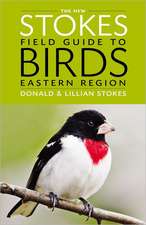Perspectives in Primate Biology: Advances in Behavioral Biology, cartea 9
Editat de A. Chiarellien Limba Engleză Paperback – 22 mai 2013
Din seria Advances in Behavioral Biology
- 5%
 Preț: 368.00 lei
Preț: 368.00 lei -
 Preț: 401.79 lei
Preț: 401.79 lei -
 Preț: 406.63 lei
Preț: 406.63 lei - 15%
 Preț: 649.54 lei
Preț: 649.54 lei -
 Preț: 387.20 lei
Preț: 387.20 lei -
 Preț: 405.28 lei
Preț: 405.28 lei -
 Preț: 381.43 lei
Preț: 381.43 lei - 5%
 Preț: 378.07 lei
Preț: 378.07 lei - 5%
 Preț: 372.76 lei
Preț: 372.76 lei - 5%
 Preț: 724.50 lei
Preț: 724.50 lei - 5%
 Preț: 668.50 lei
Preț: 668.50 lei - 5%
 Preț: 378.97 lei
Preț: 378.97 lei - 15%
 Preț: 672.62 lei
Preț: 672.62 lei -
 Preț: 385.08 lei
Preț: 385.08 lei - 15%
 Preț: 673.27 lei
Preț: 673.27 lei -
 Preț: 407.39 lei
Preț: 407.39 lei - 5%
 Preț: 713.75 lei
Preț: 713.75 lei - 5%
 Preț: 716.84 lei
Preț: 716.84 lei - 5%
 Preț: 372.59 lei
Preț: 372.59 lei - 15%
 Preț: 680.47 lei
Preț: 680.47 lei - 15%
 Preț: 687.19 lei
Preț: 687.19 lei - 15%
 Preț: 596.01 lei
Preț: 596.01 lei -
 Preț: 421.05 lei
Preț: 421.05 lei - 15%
 Preț: 661.65 lei
Preț: 661.65 lei - 15%
 Preț: 663.27 lei
Preț: 663.27 lei - 5%
 Preț: 402.17 lei
Preț: 402.17 lei - 5%
 Preț: 369.29 lei
Preț: 369.29 lei -
 Preț: 409.30 lei
Preț: 409.30 lei - 15%
 Preț: 660.18 lei
Preț: 660.18 lei -
 Preț: 386.00 lei
Preț: 386.00 lei - 15%
 Preț: 646.62 lei
Preț: 646.62 lei -
 Preț: 403.15 lei
Preț: 403.15 lei -
 Preț: 397.59 lei
Preț: 397.59 lei -
 Preț: 406.63 lei
Preț: 406.63 lei - 5%
 Preț: 756.15 lei
Preț: 756.15 lei - 5%
 Preț: 406.57 lei
Preț: 406.57 lei - 15%
 Preț: 638.11 lei
Preț: 638.11 lei - 5%
 Preț: 389.93 lei
Preț: 389.93 lei - 5%
 Preț: 392.13 lei
Preț: 392.13 lei - 5%
 Preț: 719.74 lei
Preț: 719.74 lei -
 Preț: 389.49 lei
Preț: 389.49 lei - 5%
 Preț: 2147.36 lei
Preț: 2147.36 lei - 5%
 Preț: 1424.68 lei
Preț: 1424.68 lei - 5%
 Preț: 1430.35 lei
Preț: 1430.35 lei - 5%
 Preț: 2124.15 lei
Preț: 2124.15 lei
Preț: 395.25 lei
Nou
Puncte Express: 593
Preț estimativ în valută:
75.64€ • 78.68$ • 62.45£
75.64€ • 78.68$ • 62.45£
Carte tipărită la comandă
Livrare economică 15-29 aprilie
Preluare comenzi: 021 569.72.76
Specificații
ISBN-13: 9781461589921
ISBN-10: 1461589924
Pagini: 336
Ilustrații: IX, 324 p. 45 illus.
Dimensiuni: 178 x 254 x 18 mm
Greutate: 0.59 kg
Ediția:Softcover reprint of the original 1st ed. 1974
Editura: Springer Us
Colecția Springer
Seria Advances in Behavioral Biology
Locul publicării:New York, NY, United States
ISBN-10: 1461589924
Pagini: 336
Ilustrații: IX, 324 p. 45 illus.
Dimensiuni: 178 x 254 x 18 mm
Greutate: 0.59 kg
Ediția:Softcover reprint of the original 1st ed. 1974
Editura: Springer Us
Colecția Springer
Seria Advances in Behavioral Biology
Locul publicării:New York, NY, United States
Public țintă
ResearchCuprins
Embryogenesis in vitro: An Experimental Model for the Understanding of Reproductive Physiology and Development in Mammals.- in vitro Fertilization.- in vitro Capacitation of Epididymal Spermatozoa.- in vitro Maturation of Follicular Oocytes.- Discussion.- Summary.- Comparative Neuroanatomy of Prosimian Primates: Some Basic Concepts Bearing on the Evolution of Upright Locomotion.- Basic Structure of Nerve Tissue.- to the Problem.- Sensory Centers and Pathways Related to Posture.- The Cerebellum.- Motor Centers and Pathways.- Discussion and Summary.- Outline of a Primate Visual System.- Optical Characteristics of the Macaque Eye.- Structure and Activity of the Retina.- Optic Nerve.- Geniculo-Cortical Pathway.- Color Coding.- Beyond the Striate Cortex.- Retino-Tectal System.- Overview of the Macaque Visual System.- Comparisons with Other Primates.- The Study of Chromosomes.- The Importance of Chromosomes in Taxonomic and Phylogenetic Study.- How Chromosomes May Change in Number and in Morphology.- The Karyotype of Primates.- Chromosomes of the Prosimians.- Chromosomes of the New World Monkeys.- Chromosomes of the Old World Monkeys.- Chromosomes of the Anthrapoid Apes and the Origin of the Human Karyotype.- An Attempt to Revise the Classification of the Old World Monkeys and to Interpret Their Phylogenesis on the Basis of Karyological Data.- Immunogenetics of Primates.- Immunological Systems.- M Factor.- N Factor.- The Fhenotypes.- The Genetic Pattern.- Parantigens and Paratypes.- Histo-Compatibility Antigens.- Conclusion.- Comparative Virology in Primates.- Capture and Holding in Exporting Country.- Shipment.- Importation.- Virus Infections.- Conclusions.- Comparative Primate Learning and Its Contributions to Understanding Development, Play, Intelligence, and Language.- The Need for a Valid Comparative Behavioral Primatology and Psychology.- Social Behavior Primatology and Adult Competence.- Play: The Fountainhead of Competence and Creativity?.- The Evolution of Human Intelligence.- Qualitative Differences in Learning in Relation to Brain Development.- The Relative Intelligence of the Great Apes.- Individual Differences among Nonhuman Primates.- Readiness to Attend to Visual Foreground Clues: An Ecological Adaptation?.- Learning and Language.- Learning and Transmission of Proto-Cultural Behaviors.- Summary.- Principles of Primate Group Organization.- Numerical Data.- The Use of Space.- Social Mechanisms.- Role Analysis.- Group Function.- Nonhuman Primates: A Vulnerable Resource.- Users and Traders of Primate Animals.- Activities Supporting Resource Management and Control.- Economics and Politics of Conservation in Practice.- Appeal for Conservation of Nonhuman Primates.- List of Contributors.









